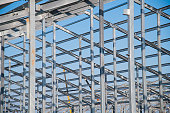Unraveling the Secrets of Space Frame Engineering
페이지 정보

본문
The physics behind space frame stability can be understood by studying the fundamental concepts of materials science, specifically the behavior of loaded members under different types of loads and stresses. A space frame structure consists of a series of interconnected points and lines, which are subjected to various loads and external forces.

When a load is applied to a space frame structure, it causes the members to change shape, resulting in internal forces. The physical properties of the members, such as their moment of inertia, play a critical role in determining the level of distortion. The ability of a space frame to resist deformation and maintain its shape under load is often attributed to the principle of balance, which states that the sum of the external forces acting on a system must be equal to the sum of the reaction forces.
There are several types of loads that can affect space frame stability, including bending loads. Axial loads cause the members to change length, while share loads result in the members rotating around a fixed point. Bending loads, on the other hand, cause the members to bend and twist. The ability of a space frame to resist these types of loads and stresses depends on its shape and material properties.
The geometrical properties of a space frame structure include its connectivity. Geometry describes the shape and size of the members and nodes, while topology refers to the method of connections between the members and nodes. Connectivity, on the other hand, describes the relationship between the members and nodes. The geometrical properties of a space frame structure can be optimized to provide maximum rigidity under various loads and stresses.
Optimization of space frame structures can be achieved using various techniques, including connectivity optimization. Geometric optimization involves modifying the geometry of the members and nodes to achieve the desired level of stiffness. Topological optimization, on the other hand, involves modifying the topology of the connections between the members and nodes. Connectivity optimization aims to optimize the relationship between the members and nodes to achieve the required stability.
In addition to optimization techniques, various computational models can be employed to analyze the stability of space frame structures. Analytical methods involve using mathematical formulations and theories to compute the material response. Numerical methods, on the other hand, involve using finite element analysis to model the behavior of the structure. These methods provide a more accurate prediction of the structural behavior and سازه فضاکار can be used to evaluate the effectiveness of various optimization strategies.
In conclusion, understanding the physics behind space frame stability is essential to ensure that these structures meet the required performance criteria and function as expected. By studying the fundamental concepts of structural mechanics and applying numerical models, a space frame can be designed that exhibits maximum stability under various mechanical constraints.
- 이전글How to Make a Reservation For a Parking Slot at The Airport 25.05.31
- 다음글7 Strange Facts About Everygame Poker Review 25.05.31
댓글목록
등록된 댓글이 없습니다.